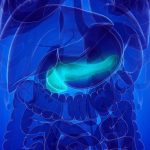
Could the blockbuster GLP-1 meds like Wegovy and Ozempic have a role to play in helping people cut down on problem drinking? A new study suggests so. Researchers at Case Western Reserve University in Cleveland report that obese folks with drinking issues who took the drugs to shed pounds had an up to 56% reduction in re-occurrence of alcohol use disorder over one year later, compared to those not using the meds. “This is very promising news in that we may have a new therapeutic method to treat alcohol use disorder,” said lead researcher Rong Xu. She’s a professor of biomedical informatics at the Case Western’s School of Medicine. Prior data has suggested that something about GLP-1 diabetes/weight-loss drugs can have the effect of curbing excess drinking. And the Case Western team have already shown that semaglutide (Ozempic/Wegovy) can have other unexpected health benefits. “In January we showed that semaglutide is associated with a decrease in suicidal thoughts, and in March, we demonstrated that semaglutide is also associated with a reduction in both new diagnoses and recurrence of cannabis use disorder,” Xu noted in a university news release. So what about alcohol intake? In the new study, Xu’s team pored over the electronic health records of nearly 84,000 patients with obesity. Compared to people who weren’t taking semaglutide, those who took the med saw a… read on > read on >





























-300x200.jpg)







-300x169.jpg)
